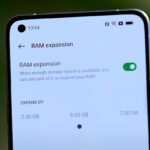This makes it possible to have some impressive sounds coming from devices with simple speaker setups like phones and tablets. Android devices are no exception and some phones such as the Samsung galaxy S line even ship with a surround sound feature. This is quite intriguing but how does it work, and how can you enable it on your Android phone?
How Virtual Surround Sound Works
In order to gain a better understanding of virtual surround sound, it’s useful to look at how regular stereo sound works. Stereo sound is made up of a left and a right audio channel. Stereo sound gives some sense of directionality due to volume differences between two channels. Imagine being at a concert and there’s a guitarist on your left and the singer is on your right. Your ears will pick up on the difference in volume coming from both people. Stereo sound replicates this. Virtual surround sound works by fooling your brain into thinking that an audio source is coming from multiple directions when it’s actually only being played back through left and right audio channels. While stereo sound uses the difference in volume based on the location of an audio source to create a sense of directionality, virtual surround sound goes a step further by introducing a delay in playback of an audio source. Going back to the concert example, if the guitarist is closer to you, you will hear him/her with your left ear slightly before you hear the singer with your right ear. A virtual surround setup works by introducing a delay between the left and right channels of an audio source to mimic this. Our brains can process such a delay almost instantaneously in a real world situation and this is what allows us to pinpoint the location of sounds that we hear. By writing clever software which introduces the delay between the left and right channels, a sense of multi-directional sound can be created. You will need to use stereo headphone or have a stereo speaker setup in order to use virtual surround sound since it relies on left/right stereo audio output.
How to Get Virtual Surround Sound on Your Android Device
If you don’t have a Samsung Galaxy S device you are still in luck. Install the Noozxoide EIZO-rewire™ PRO app and you will be able to have virtual surround sound on your device. Download Noozxoide EIZO-rewire™ PRO When you enable the various options Noozxoide EIZO-rewire™ PRO provides, it affects the audio output system-wide. Simply install it and enable the options you want and you will hear the difference when you playback an audio source. On opening the app you will first need to select what type of speakers you will be using. Choose Line-out for headphones, soundbars and speakers, Built-in for onboard speakers, soundbars and HDMI outputs, or Wireless for bluetooth headphones, soundbars or speakers. After selecting the type of speaker you will be using, the option which will actually enable the virtual surround sound is called Create VSUR on practical monitor under the NOOZXOIDE LogicSurroundES subsection. You will also be able to choose the kind of room environment you want the audio playback to emulate. There is a Focus option which is aimed for a close-range experience. There are also 2 Studio options and 2 Live options. There are also a few other options for tweaking the audio playback under the NOOZXOIDE Balance XEQ and NOOZXOIDE Psychoacoustics II subsections. The options under NOOZXOIDE Balance XEQ are aimed at producing a “versatile, warm, analogye-style sound” as the app’s developer puts it while those under NOOZXOIDE Psychoacoustics II makes the speaker sound deeper and more powerful.
Why You Should Give Virtual Surround Sound A Try
Virtual surround sound may not sound as great as true surround sound but this is definitely a neat trick which will enhance your listening experience while gaming and watching movies on your Android device. Since we already spend so much time with our mobile devices, it’s worth a shot enhancing the audio playback so that the best experience possible can be had. The above article may contain affiliate links which help support Guiding Tech. However, it does not affect our editorial integrity. The content remains unbiased and authentic.














